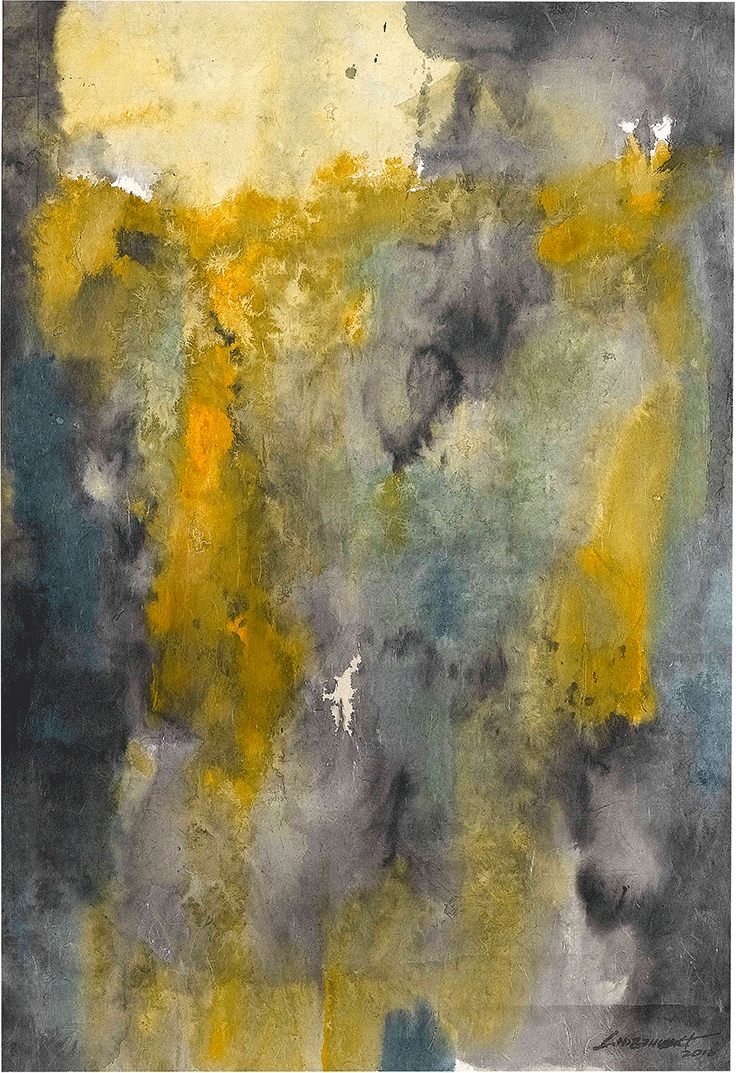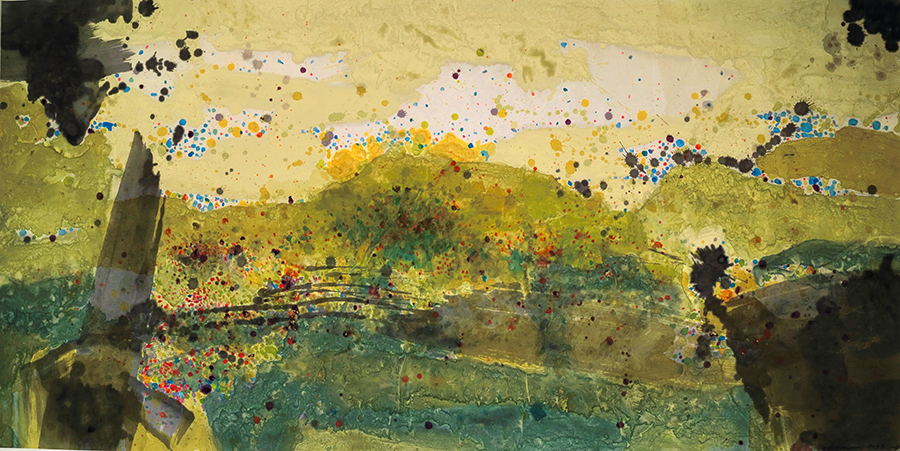Shows
Li Dezhuang's "Beyond Babel"


Singaporean artist Li Dezhuang is no stranger to the art worlds of Asia and the United States, with his brilliant combination of Chinese ink painting and abstract expressionism, and the frequent overseas exhibitions of his works. Recently, Hong Kong’s Alisan Fine Arts attempted to showcase the new chapter of the artist’s career, which has transformed from semi-abstract landscape works to fully abstract paintings, selecting some of his works from the past two decades. Walking through Li’s paintings in this cozy gallery was a pleasant experience; however, the scale struggled to speak for the artist in full.
Li has an innate feeling for nature as an expressive form. In the early 1980s, his award-winning series “Blue Mountain”—which depicts his childhood memories of harbors, beaches and mountains, mainly in shades of blue and black—spoke to his status as a highly recognized artist in Singapore. During this period, he was deeply inspired by abstract expressionism after exploring contemporary art in America. Combined with his rich, Chinese ink palette, his use of colors became even more confident and bold at this time. It also resulted in him developing his composition of breadth and depth. The exhibition at Alisan Fine Arts looked at Li's artistic transformation and exploration, as well as the blurred boundary between Chinese and Western artistic expressions in his works. The figurative, biblical reference of the Tower of Babel in this exhibition indicated Li’s capacity as an artist and his influences from Chinese and Western art. His works, however, cannot be labelled by either.

The show started with the first group of paintings entitled “Early Spring.” One of the paintings, also titled Early Spring (2009), showed a large piece of grass, which was colored green with drops of paint and ink wash. The work has been considered Li’s revisiting of his “Blue Mountain” series. The combination of Spring-like colors and black ink is delightful, but it does not break forth from its compelling predecessor. Its vividness took over any depth and evocativeness. Opposite was Village of Mandarins (2015). Here, though bits of orange shy away under dots of black ink—which are themselves engulfed in layers of green—I could strongly sense the juiciness of the portrayed mandarins. The subtle colors generate a brilliant composition. The distance between layers of green hills and the viewer suggest the influence of Chinese landscape painting, with a cleverly composed perspective.
The second group of works was the compelling trilogy of paintings, “Jing, Shan, Tian” (2014–15). Respectively, the pieces show geometric shapes of the Chinese characters for “well” (Jing), “mountain (Shan) and “field” (Tian). The pieces play on the viewers’ vision of picturesque scenery. In Tian, subtle strokes of blue, yellow and orange pose a sharp contrast against the work’s heavily-inked, black frame. This fantastic piece evokes different landscapes in a field. It is an open-ended poem of tenderness and timelessness. Shan successfully pictures the grittiness of a black mountain against a dawn-like yellow and grey background. The large, black shape offered a lot of room for imagination and fantasy to viewers. However, in terms of the exhibition title’s reference to the Tower of Babel, the irony was that Li’s work titles, and the Chinese characters depicted in them, could only speak to viewers with knowledge of the Chinese language.
The last group of works in the exhibition had a personal touch. My Journey (2000) is seen as channeling the artist’s personal feelings concerning his artistic explorations. Relatedly, he also wrote a poem about the fear of falling for this piece. The painting’s grave demeanor and imposing tension stood out in the show and brought out Li’s genuine confession that professes the danger and bumpiness of his artistic journey. However, the poem somehow limited the viewers’ imagination and interpretation of this superb, abstract piece.
The selection of the works in this exhibition was thoughtful; however, the ambition of this solo presentation could not be fully accommodated due to its scale. There was also a lack of display of older works by the artist. The voice of the new works could have resonated deeper and louder if they had been juxtaposed with Li’s earlier works.

“Beyond Babel: Li Dezhuang” was on view from February 20 to March 16, 2016, at Alisan Fine Arts, Hong Kong.







